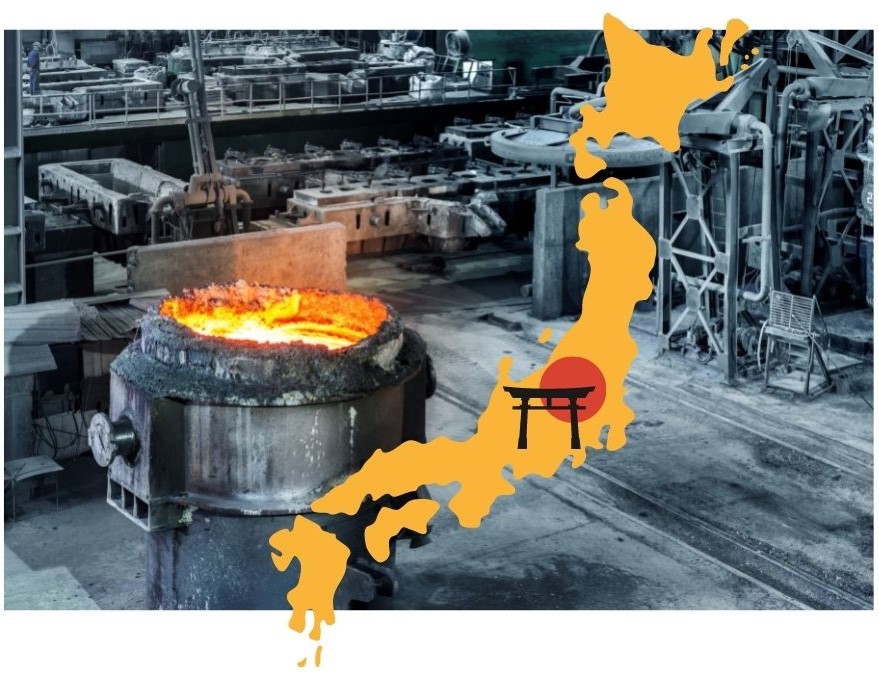On February 7, the Biden administration removed yet another tariff from the previous government – this time the Section 232 steel tariffs on Japan. This follows a similar move by Washington to change the Section 232s for European Union sourced steel as well. The Japanese wanted a similar deal, but Washington set tighter limits this time in order to avoid what may be a glut of imports from the world’s second-largest steel exporter after China.
Like EU steel of all types, Japanese steel was subject to the Section 232 25% tariff. Those tariffs end on April 1 for Japan. They ended January 1 for Europe.
There are differences between the two deals.
The tariffs always allowed for exemptions, and Europe was able to keep those exemptions. Those exemptions do not count towards the import quota limit of 3.3 million metric tons. Under the EU deal, European steel exporters will get more duty-free access above the 3.3 million tons due to those exemptions.
Japan wanted their exemptions to be excluded from their tariff rate quota (TRQ), too. The Commerce Department rejected the idea.
Japan will now have a maximum of 1.25 million tons it can ship to the United States duty free. Any product line that received an exemption from the 25% tariffs will still keep those exemptions, but the volume will be included in the total TRQ, unlike the EU deal. It is believed that Japan’s earlier exemptions will eat up most of its TRQ.
The deal requires the finished product to have come from melted and poured steel in Japan. This requirement was also in the U.S.-EU agreement and should ensure that Japan does not become a conduit for steel made in Japan’s main markets – South Korea and China, for instance — without an agreement with the United States.
Steel Under the Tariff Regime
There has been a considerable amount of investment going on by the U.S. steel industry. A combination of tariffs, as well as corporate tax cuts, helped.
Following implementation of Section 232 measures in 2018—and prior to the global downturn in 2020—U.S. steel output, employment, capital investment, and financial performance all improved. In particular, U.S. steel producers announced plans to invest more than $15.7 billion in new or upgraded steel facilities, creating at least 3,200 direct new jobs, many of which are now poised to come online. In addition, more than $5.9 billion was invested by nine firms in plant acquisitions as part of industry restructuring to increase efficiency, preserving additional jobs at those facilities. – Economic Policy Institute, March 24, 2021
Prior to the tariffs imposed by the Trump administration, the steel industry was decapitalizing and slowly reducing capacity. Tariffs and tax cuts gave the industry the impetus to invest. Moreover, many steel companies are investing because of desires to address climate change as the U.S. steel industry is often produced from recycled materials, giving it an edge when it comes to lower carbon emissions. Steel is one of the heaviest emitters of carbon into the atmosphere. Japan’s steel production is no cleaner than India’s. U.S. steel production is considered cleaner than Europe’s.
Climate policies may one day be another means to protect the U.S. steel industry from Asian overcapacity.
Under the new Japan deal, Japan does not have to be part of the Global Arrangement on Sustainable Steel at this time. This would be a headwind for Japan if required. Europe is a party to this agreement.
Tariff rate quotes are better than removing tariffs. But as the industry already has tariff exclusions from Canada and Mexico – which account for roughly a third of imports – the question will be whether the new TRQs for European Union and Japan exporters will eat into U.S. producer market share.
The UK wants a steel deal like Europe. China owns British Steel. Another TRQ would start to erase the intent of the 232s, increasing the permissible volume of duty-free steel into the U.S.
Tariff Incidence in the Real World: Why Consumers (Mostly) Didn’t Pay the Steel Tariffs












